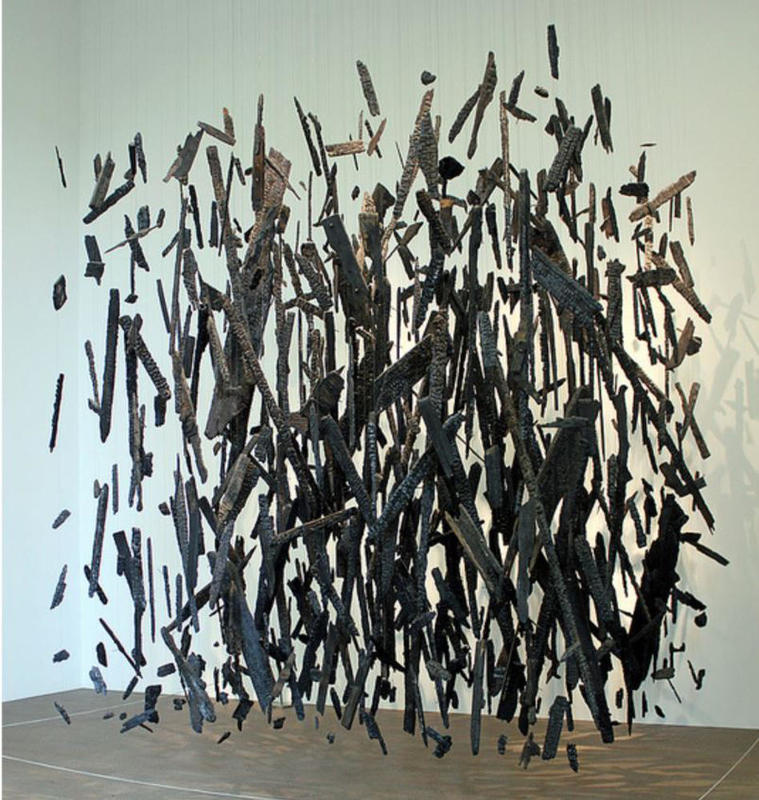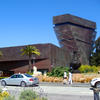More about Anti-Mass

Contributor
Cornelia Parker’s floating installation Anti-Mass looks a lot like the charred logs of a behemoth beach bonfire, levitating under the Wingardium Leviosa spell.
Which is not so far off, actually, although the real backstory is a bit more of a downer:
The burnt timber is the result of a run-in between a Southern Baptist Church in Alabama and one of the racist arsonists that seem to plague the South. In fact, nearly ninety percent of U.S. church arsons happen in the South. That’s according to a self-conducted study Parker put on with the help of the endlessly-customizable Google news alerts. Those alerts are also the fortunate reason Parker was able to get her hands on this debris.
Known for her lack of technical skill, Parker’s made a point of leaving her art-making up to nature and other organic processes. That’s where pieces like the older sibling of Anti-Mass came from. In the earlier iteration, Parker harvested the rubble from a Texas Church that forgot to invest in lightning rods and rigged them up in a similar suspension trick. In the case of the lightning disaster, she egged the minister on with the words of nasty lawyers. In legalese, it was “an act of God.” The reverend’s response? “Oh yes, I think God wants us to have a bigger, better Church.”
Unsurprisingly, Parker was born into a Catholic family and as an adult she’s retained a fear of the imminent apocalypse. Her artistic habit of throwing objects off cliffs and reclaiming destroyed buildings is just her way of keeping Armageddon at bay, she says. In Anti-Mass, the floating chunks of pews are resurrected, performing “mass” once again in their new sanctuary, the museum.
Parker’s work has inspired many responses, including a screechy composition by a South Korean violinist. However, my recent favorite is an emotional home-video of Anti-Mass set, in my mind, to an ethereal choir of burnt woodchips. The cameraman’s remorse is apparent in the shaky handling and jolting zooms. A must-see.











